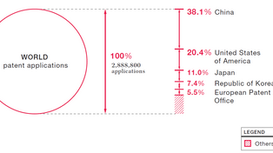What are differences between patent registration systems and substantive examination systems?
- Admin
- May 10, 2023
- 1 min read

Different countries have different patent examination systems, with two major systems in use worldwide: the patent registration system and the substantive examination system. Under the patent registration system, patent offices only review the application documents to ensure that they meet the requirements and are complete. Some countries still use the registration system for utility models and industrial designs. The advantage of this system is its simplicity, as it requires fewer examiners and faster examination procedures. However, the low requirements may result in low-quality patents. The substantive examination system, also known as the full examination system, originated in the U.S. in 1836. In addition to formality checks, it evaluates the novelty, non-obviousness, and utility of the invention described in the application. This system ensures better patent quality, and stability, and reduces litigation, but requires a longer examination time and a larger examination bureaucracy. In 2017, for instance, China had almost 3.7 million applications for inventions, utility models, and industrial designs, and more than 11,000 patent examiners.





















Comments